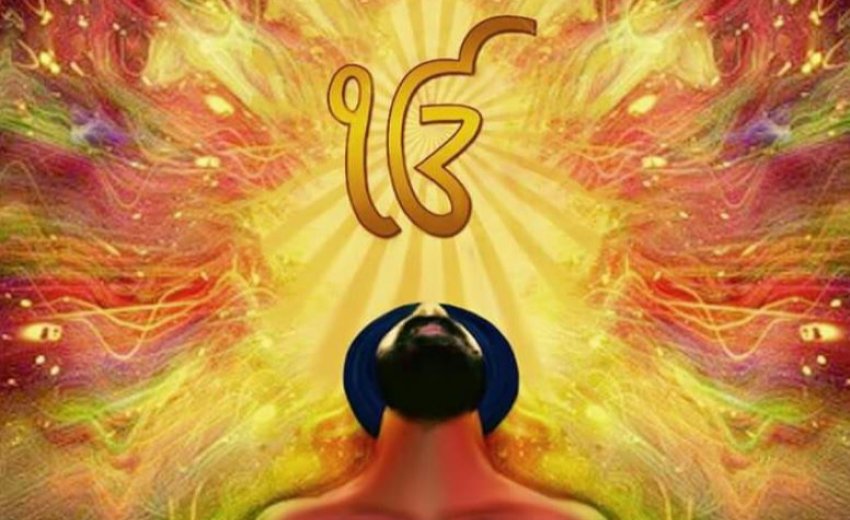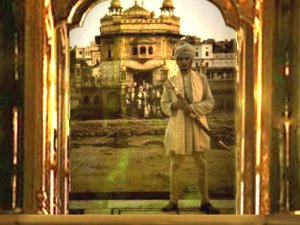Read Part I here
Read Part II here
Read Part III here
Read Part IV here
A long view of Sikh history reveals a golden age of meditation from the time of Guru Nanak to the battle of Bhangani Sahib (1688). The best evidence for this exists in Gurbani, which has already been discussed. A second source is the accounts of the Guru and his Sikhs in this period.
During this period, the vitality of the Sikh community emanated from the practice of deep meditation, perfected and taught by the Guru. Children as young as five could achieve profound meditation and the mother played the unique role of Gurdev Mata, the first spiritual teacher of the newborn. In this era, the Guru’s mothers, wives, widows, and daughters – and through them, all Sikh women – enjoyed a personal connection with the great teacher and leader of the Sikhs. Tradition tells us that Guru Hargobind taught: 'Woman is a man's conscience and money his servant. Children carry forward one’s lineage.'
Generally speaking, the period from 1688 to the second half of the 18th century was a period of great violence and social upheaval. With widescale persecution and invasions, sheer survival would have been priorities. This is evidenced by the codes of living called the rehitnamas written in this period which focus on keeping Sikhs together, rather than meditation.
With the Sikh nation under threat, deep meditation gave way to martial exercises and everywhere, grown men came to predominate. With the passing of the guruship to Siri Guru Granth Sahib, both the care of the Guru and the transcription of new volumes was entrusted to men only.
From the late 18th century to the start of the first Anglo-Sikh war (1845) was a period of relative peace in Punjab, where most Sikhs still lived. It was a time of prosperity and building of Gurdwaras, but not a period of inner meditation and inspiration. Rather, the time of the Sikh kingdom of Maharaja Ranjit Singh, from 1801 to 1839, when the Harimandir (aka ‘Golden Temple’) in Amritsar was famously covered in gold, is described by a number of historians as a period of inner decay. Brahmanical rituals which were introduced in the maharaja’s court as an aspect of stately decorum, spread into everyday use in Sikh households. Many new Sikh converts from Hinduism kept their Hindu customs and thinking, thereby affecting the Sikh community as a whole. While women’s situation may have improved in the early years of the Panth, devout Sikhs were shocked to learn of the sati, the burning alive of four of his queens and seven maid servants at the funeral of Maharaja Ranjit Singh. Neither the families of the Gurus, the Bedis and Sodhis, nor the religious teachers, the Nirmalas and Udasis seemed to mind the deteriorating situation. Rather, most were comfortable with their new social status and wealth in the maharaja’s kingdom.
The British period (1846-1947), partition and Indian independence (1947), together presented new challenges of marginalization and dilution of the faith. The late 1800s was marked by two reform movements, the Nirankaris and the Namdharis, dedicated to purifying the faith. In the twentieth century, famous saints like Sant Baba Attar Singh, Sant Baba Nand Singh, and Bhai Randhir Singh, all known for their vigorous meditative practices, responded with movements of spiritual renewal. In the late 1900s, Siri Singh Sahib Harbhajan Singh Khalsa exported Sikh practices from India and helped gain recognition of the Sikh faith. He also taught meditation as a science and encouraged its scientific evaluation.
With the growing toll of stress and mental illness in the world today, one might think this to be an ideal time for the study of meditation. While the field of meditation research currently is dominated by the study of Buddhist and Hindu practices, Sikh dharma also has a vibrant contemplative tradition which may be explored. As there are no external physical threats to Sikhs individually and collectively today, the 21st century offers the opportunity of a second golden age of meditation.
A more pessimistic view of the present-day disconnect between Sikhs and their tradition of deep meditation recognizes the current conditions of the Panth and its focus on the realization of external objectives, together with its embrace of rituals and abstract theology, as a state of spiritual decay. Moreover, alcoholism is, and has for some time been, rampant among Sikh men. Drug addiction has also become common among Sikh youth, especially in Punjab. Gurbani vividly describes the world in a state of duality and decay:
ਧਨਾਸਰੀ ਮਹਲਾ ੧ ਘਰੁ ੩
धनासरी महला १ घरु ३
Ḏẖanāsrī mėhlā 1 gẖar 3
ੴ ਸਤਿਗੁਰ ਪ੍ਰਸਾਦਿ ॥
ੴ सतिगुर प्रसादि ॥
Ik▫oaʼnkār saṯgur parsāḏ.
ਕਾਲੁ ਨਾਹੀ ਜੋਗੁ ਨਾਹੀ ਨਾਹੀ ਸਤ ਕਾ ਢਬੁ ॥
कालु नाही जोगु नाही नाही सत का ढबु ॥
Kāl nāhī jog nāhī nāhī saṯ kā dẖab.
ਥਾਨਸਟ ਜਗ ਭਰਿਸਟ ਹੋਏ ਡੂਬਤਾ ਇਵ ਜਗੁ ॥੧॥
थानसट जग भरिसट होए डूबता इव जगु ॥१॥
Thānsat jag bẖarisat ho▫e dūbṯā iv jag. ||1||
ਕਲ ਮਹਿ ਰਾਮ ਨਾਮੁ ਸਾਰੁ ॥
कल महि राम नामु सारु ॥
Kal mėh rām nām sār.
ਅਖੀ ਤ ਮੀਟਹਿ ਨਾਕ ਪਕੜਹਿ ਠਗਣ ਕਉ ਸੰਸਾਰੁ ॥੧॥ ਰਹਾਉ ॥
अखी त मीटहि नाक पकड़हि ठगण कउ संसारु ॥१॥ रहाउ ॥
Akẖī ṯa mītėh nāk pakṛėh ṯẖagaṇ ka▫o sansār. ||1|| rahā▫o.
ਆਂਟ ਸੇਤੀ ਨਾਕੁ ਪਕੜਹਿ ਸੂਝਤੇ ਤਿਨਿ ਲੋਅ ॥
आंट सेती नाकु पकड़हि सूझते तिनि लोअ ॥
Āʼnt seṯī nāk pakṛėh sūjẖ▫ṯe ṯin lo▫a.
ਮਗਰ ਪਾਛੈ ਕਛੁ ਨ ਸੂਝੈ ਏਹੁ ਪਦਮੁ ਅਲੋਅ ॥੨॥
मगर पाछै कछु न सूझै एहु पदमु अलोअ ॥२॥
Magar pācẖẖai kacẖẖ na sūjẖai ehu paḏam alo▫a. ||2||
ਖਤ੍ਰੀਆ ਤ ਧਰਮੁ ਛੋਡਿਆ ਮਲੇਛ ਭਾਖਿਆ ਗਹੀ ॥
खत्रीआ त धरमु छोडिआ मलेछ भाखिआ गही ॥
Kẖaṯarī▫ā ṯa ḏẖaram cẖẖodi▫ā malecẖẖ bẖākẖi▫ā gahī.
ਸ੍ਰਿਸਟਿ ਸਭ ਇਕ ਵਰਨ ਹੋਈ ਧਰਮ ਕੀ ਗਤਿ ਰਹੀ ॥੩॥
स्रिसटि सभ इक वरन होई धरम की गति रही ॥३॥
Sarisat sabẖ ik varan ho▫ī ḏẖaram kī gaṯ rahī. ||3||
ਅਸਟ ਸਾਜ ਸਾਜਿ ਪੁਰਾਣ ਸੋਧਹਿ ਕਰਹਿ ਬੇਦ ਅਭਿਆਸੁ ॥
असट साज साजि पुराण सोधहि करहि बेद अभिआसु ॥
Asat sāj sāj purāṇ soḏẖėh karahi beḏ abẖi▫ās.
ਬਿਨੁ ਨਾਮ ਹਰਿ ਕੇ ਮੁਕਤਿ ਨਾਹੀ ਕਹੈ ਨਾਨਕੁ ਦਾਸੁ ॥੪॥੧॥੬॥੮॥
बिनु नाम हरि के मुकति नाही कहै नानकु दासु ॥४॥१॥६॥८॥
Bin nām har ke mukaṯ nāhī kahai Nānak ḏās. ||4||1||6||8||
In the Kal Age, there in no integrity and no course of truthfulness.
Holy places are desecrated and the world is drowning in delusion.
In the Kal Age, God’s Name is the medicine. Closing their eyes and plugging their noses,
Humanity has descended into thuggery. Holding his nose shut with his fingers,
Man thinks he is seeing the three worlds, but he does not see even what goes on behind his back.
What a wonderful meditative posture is this!
The warrior class has abandoned its sacred duty and has taken up the language of the enemy.
There is no place of honour or honour of place in this world, and none considers right and wrong.
The scholars are polished in grammar and book-knowledge. Refined is their knowledge of sacred texts.
Without God’s Name, none is free, says Nanak the Lord’s slave.
(Siri Guru Granth Sahib, Ang 662-663)
As in yesterday’s situation, those who should be defending the faith have instead taken up habits at odds with a culture of meditation. Today as well, there are scholars polished in the language of Gurbani, but lacking in self-knowledge and inspiration.
Some thoughtful Sikh authors have described this era of dysfunction and decay. While these critics do not discuss meditation and the passing on of spiritual discipline, they criticize the religious administration in Amritsar. Writer and intellectual Kharak Singh states:
Leaders follow a policy of concentrating on politics alone; religious issues are not on their agenda… Not many among its elected members (or those who decorate Teja Singh Samundri Hall at its General Meetings for a few hours in a whole year) have religious scholarship or knowledge of Sikhism as their strong point… Resort to liquor distribution and other unfair means during elections are common knowledge… The challenges, unless adequately resolved, constitute a serious threat to the integrity and future of the Sikhs.
Two hundred years in its formation, the last three hundred years have been filled with trial and difficulty for the Sikh nation. After a half century of persecution and invasions, the wealth and relative peace of a Sikh kingdom only weakened the spirit of Khalsa. This is when ritualism entered the Panth. The status of women generally declined. Neither children nor women any longer played any valuable role as teachers or keepers of the faith. British colonialism and colonial habits then took another jab at the inner life of the Sikh nation. The impact of the British was such that, seventy years after their departure, Western ways of thinking and dressing still dominate in Punjab and the diaspora. Like most British children, Sikh children are not typically encouraged to meditate or to reach for spiritual glory. Their parents want them to be a Western doctor or lawyer, not a saint-soldier. Even the students of Sikh schools are pressed to compete academically without detailed instruction in meditation and self-development.





